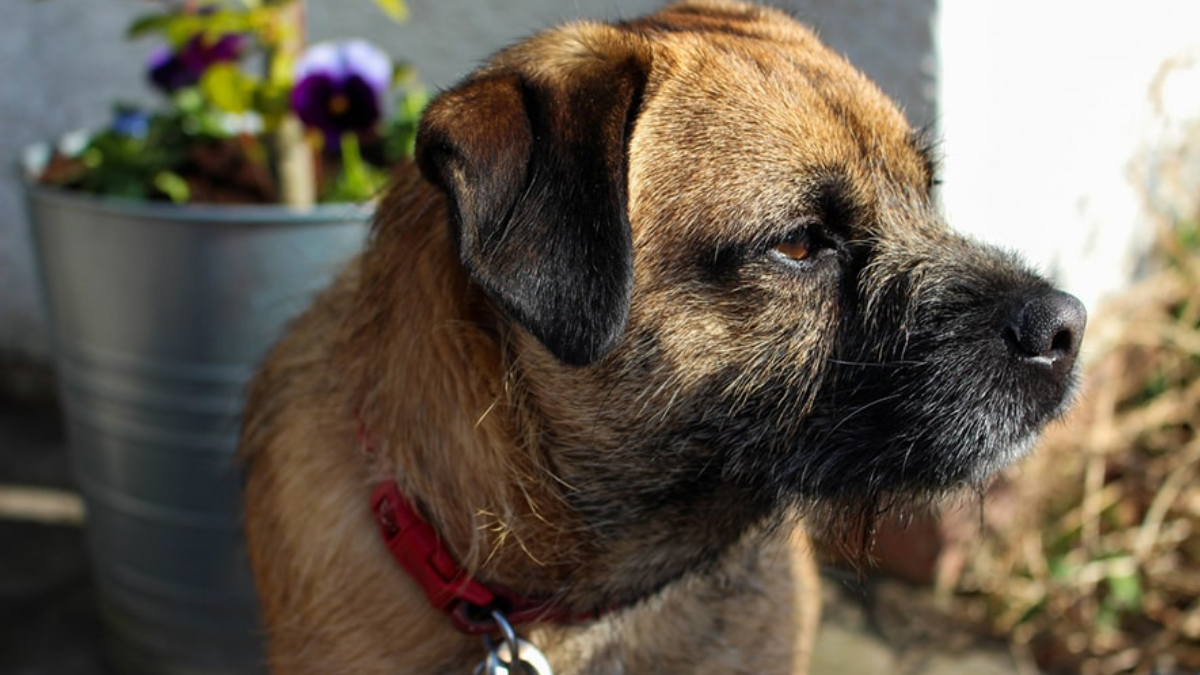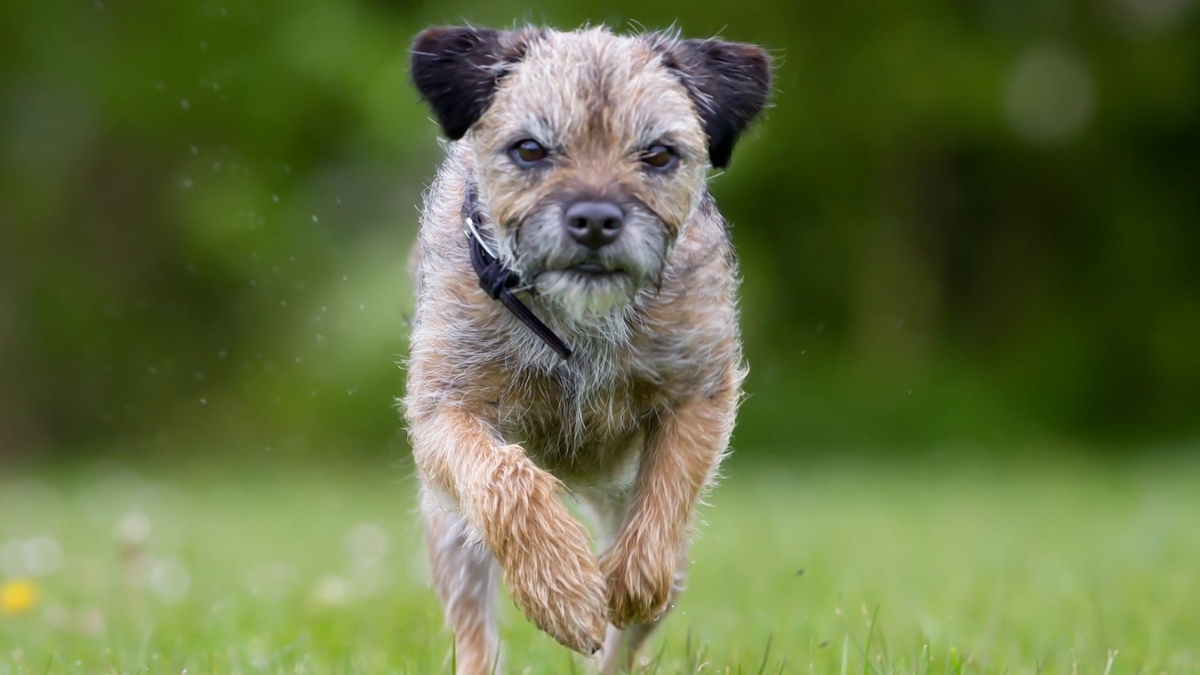Border Terriers are a popular breed of dog known for their energetic and playful personalities. Are Border Terriers Hypoallergenic? However, for those with allergies, the question of whether or not they are hypoallergenic is an important one. While no dog breed can be completely hypoallergenic, some breeds are known to produce fewer allergens than others. In this article, we will explore whether Border Terriers fall into this category.

Many people assume that a dog's fur is the main culprit when it comes to allergies. However, it is the dander, saliva, and urine that can trigger allergic reactions in humans. Border Terriers have a wiry, dense coat that sheds minimally, which may lead some to believe that they are hypoallergenic. However, it is important to note that even dogs with minimal shedding can still produce allergens.
Understanding Hypoallergenic Pets
Hypoallergenic pets are animals that are less likely to cause an allergic reaction in people who are sensitive to pet allergens. This does not mean that these pets are completely allergen-free, but their reduced levels of allergens make them a better choice for people with allergies. The term "hypoallergenic" is often used to describe certain dog breeds, such as Border Terriers, that produce fewer allergens than other breeds.
Common Allergens in Pets
The main allergens in pets are found in their dander, saliva, and hair. Dander is made up of tiny flakes of dead skin that animals shed naturally, while saliva and hair can also contain allergens. When these allergens are inhaled or come into contact with the skin, they can trigger an allergic reaction in some people.
Hypoallergenic vs. Non-Hypoallergenic Breeds
While no breed of dog is completely hypoallergenic, some breeds are less likely to cause an allergic reaction than others. This is because they produce fewer allergens or have a different type of coat that sheds less. Border Terriers are often considered a hypoallergenic breed because they have a wiry, non-shedding coat that produces less dander than other breeds. However, it is important to note that individual dogs within a breed can still vary in their allergen levels, so it is always a good idea to spend time with a dog before bringing them into your home if you have allergies.
Overall, understanding hypoallergenic pets is important for people with allergies who want to enjoy the companionship of a furry friend. While no pet is completely allergen-free, choosing a hypoallergenic breed like a Border Terrier can help reduce the risk of allergic reactions.
Border Terrier Basics
Breed Overview
The Border Terrier is a small-sized breed that originated in the border regions of England and Scotland. They were originally bred for hunting foxes and other small game, and their compact size and wiry coat made them well-suited for the task. Today, they are popular as family pets and are known for their friendly and affectionate nature.
Physical Characteristics
Border Terriers are small dogs, typically weighing between 11 and 16 pounds and standing 10 to 11 inches tall at the shoulder. They have a distinctive wiry coat that comes in a range of colors, including red, blue, tan, and wheaten. Their double coat helps to protect them from the elements, and regular grooming is necessary to keep them in good condition.
Temperament and Personality
Border Terriers are known for their friendly and outgoing personalities. They are loyal and affectionate with their families, and they get along well with children and other pets. They are also energetic and playful, and they enjoy spending time outdoors. However, they can be independent and stubborn at times, so early socialization and training are important.
In terms of allergies, Border Terriers are not considered hypoallergenic. While they do have a wiry coat that sheds minimally, they still produce dander and saliva that can trigger allergies in some people. However, they may be a good option for people with mild allergies, as they are less likely to cause a reaction than some other breeds.

Grooming and Care
Coat Maintenance
Border Terriers have a wiry, double coat that requires regular maintenance to keep it healthy and shiny. The outer coat is harsh and wiry, while the undercoat is soft and dense. They shed minimally, but regular grooming is necessary to prevent matting and tangling of the coat.
To maintain their coat, Border Terriers should be brushed at least once a week using a slicker brush or a comb. The soft undercoat should be combed out to prevent matting, while the harsh outer coat should be stripped or hand-plucked twice a year. This process helps to remove dead hairs and maintain the texture of the coat.
Bathing and Brushing
Border Terriers do not require frequent bathing as it can strip their coat of natural oils. They should be bathed only when necessary, using a mild dog shampoo. After bathing, the coat should be thoroughly dried to prevent matting.
Regular brushing is essential to keep their coat healthy and shiny. Brushing helps to remove loose hair, dirt, and debris from the coat. It also stimulates the skin and distributes natural oils throughout the coat.
Diet and Health
A healthy diet is important for maintaining a healthy coat. Border Terriers should be fed a balanced diet that includes high-quality protein, vitamins, and minerals. They should also be given plenty of fresh water to keep them hydrated.
Border Terriers are generally a healthy breed, but they can be prone to certain health issues such as allergies, hip dysplasia, and eye problems. Regular check-ups with a veterinarian are important to maintain their overall health and well-being.

In summary, regular grooming and care are essential for maintaining the health and appearance of a Border Terrier's coat. By following a regular grooming routine, feeding a balanced diet, and providing regular veterinary care, owners can ensure their Border Terrier remains healthy and happy.
Allergy Considerations
Border Terriers are a breed of dog that is often considered hypoallergenic. However, it is important to understand that no dog breed is completely hypoallergenic, and individuals with severe allergies may still experience allergic reactions.
Shedding and Dander
Border Terriers have a wiry coat that sheds minimally, which can be beneficial for those with allergies. However, even dogs with minimal shedding can still produce dander, which is a common allergen. It is important to note that individuals with allergies may still experience symptoms such as sneezing and itching around Border Terriers.
Saliva and Protein Allergens
Border Terriers, like all dogs, produce saliva that contains protein allergens. These allergens can cause allergic reactions in some individuals. However, Border Terriers produce less saliva than other breeds, which can make them a better choice for individuals with allergies.
Managing Allergies
Individuals with allergies can take steps to manage their symptoms when around Border Terriers. Regular grooming and bathing can help to reduce dander and allergens on the dog's coat. Additionally, individuals can take allergy medication or use allergy shots to help manage their symptoms.
Overall, Border Terriers are a breed that can be a good choice for individuals with allergies. However, it is important to understand that no dog breed is completely hypoallergenic, and individuals with severe allergies may still experience symptoms. By taking steps to manage allergies, individuals can enjoy the companionship of a Border Terrier without experiencing severe allergic reactions.
Living with a Border Terrier
Border Terriers make great pets for families looking for a small, active dog. They are known for their friendly, playful nature and are often described as "big dogs in small bodies." However, before bringing a Border Terrier into your home, it is important to understand their exercise needs, training and intelligence, and compatibility with families and other pets.
Exercise Needs
Border Terriers are energetic dogs that require daily exercise to stay healthy and happy. They enjoy walks, runs, and playtime in a fenced yard. A lack of exercise can lead to behavioral problems, such as excessive barking or destructive chewing. It is recommended to provide at least 30 minutes of exercise per day for a Border Terrier.
Training and Intelligence
Border Terriers are intelligent dogs that can be trained with positive reinforcement techniques. They respond well to praise and treats and can learn a variety of commands and tricks. However, they can also be stubborn at times, so consistency and patience are key when training a Border Terrier.

Compatibility with Families and Other Pets
Border Terriers are generally good with children and make great family pets. However, they may not tolerate rough play or teasing, so it is important to supervise interactions between children and dogs. They also get along well with other dogs and cats if they are socialized properly from a young age.
In summary, Border Terriers are active, intelligent, and friendly dogs that make great pets for families. They require daily exercise, consistent training, and socialization with other pets to thrive in a home environment.
Pros and Cons of Border Terriers as Hypoallergenic Pets
Advantages of Border Terriers
Border Terriers are a popular choice for pet owners who suffer from allergies. They have a wiry coat that sheds minimally, which makes them hypoallergenic. Additionally, they are friendly and affectionate dogs that love to be around people. They are also energetic and love to play, making them great pets for families with children.
Border Terriers are generally healthy dogs with a lifespan of 12-15 years. They are not prone to many health problems, which means they require minimal veterinary care. They are also relatively small dogs, which makes them easy to handle and transport.
Challenges and Considerations
While Border Terriers are hypoallergenic, they still require regular grooming to keep their coat in good condition. This includes brushing and trimming their coat every few months. Additionally, they have a high energy level and require daily exercise, which can be a challenge for some owners.
Border Terriers are also known for their strong prey drive, which means they may not be suitable for households with smaller pets. They are also independent dogs that can be stubborn at times, which can make training a challenge.

Overall, Border Terriers make great hypoallergenic pets for people with allergies. They are friendly, energetic, and relatively healthy dogs that require minimal veterinary care. However, they do require regular grooming and exercise, and may not be suitable for households with smaller pets.
Choosing the Right Hypoallergenic Pet
When it comes to selecting a hypoallergenic pet, there are several factors to consider. One of the most popular hypoallergenic dog breeds is the Border Terrier. However, it's important to compare them to other breeds and consider other factors before making a decision.
Comparing Border Terriers to Other Breeds
While Border Terriers are known for being hypoallergenic, they are not the only breed that is suitable for people with allergies. Other hypoallergenic breeds include Bichon Frise and Poodle. It's important to note that while these breeds may be less likely to cause an allergic reaction, no dog breed is completely hypoallergenic.
When comparing Border Terriers to other breeds, it's important to consider factors such as size, coat type, and temperament. Border Terriers are small in size, have a wiry coat that sheds minimally, and are known for being friendly and affectionate. Bichon Frise and Poodles are also small in size but have curly coats that require more grooming. They are also known for being intelligent and trainable.
Factors to Consider When Selecting a Pet
When selecting a hypoallergenic pet, it's important to consider factors beyond just the breed. Lifestyle and environment can also play a role in determining whether a pet is suitable for someone with allergies. For example, a person who is allergic to dogs may have a more severe reaction if they live in a small apartment with poor ventilation, compared to someone who lives in a larger house with good air circulation.

Other factors to consider include the level of activity and exercise a pet requires, as well as the amount of time and resources available for grooming and training. It's important to choose a pet that fits well with an individual's lifestyle and needs.
In summary, while Border Terriers are a popular hypoallergenic breed, there are other factors beyond just the breed to consider when selecting a pet. By comparing different breeds and considering lifestyle and environmental factors, individuals can make an informed decision about which hypoallergenic pet is right for them.
Conclusion:
In summary, Border Terriers are often touted as a hypoallergenic breed, but this claim is not entirely accurate. While they do have a wiry coat that sheds minimally and produces less dander than other breeds, they still produce allergens that can trigger allergic reactions in some people. Are Border Terriers Hypoallergenic?
It is important to note that allergies are highly individualized and can vary from person to person. Some individuals with allergies may find that they can tolerate Border Terriers well, while others may experience severe allergic reactions. Therefore, it is crucial to spend time with a Border Terrier before bringing one into the family to see if any allergies arise.
Overall, Border Terriers can make excellent family pets for those who do not suffer from allergies. However, for those with allergies, it is recommended to consult with a doctor or allergist before bringing a Border Terrier or any other pet into the home.
Frequently Asked Questions
- Can people with allergies usually tolerate living with Border Terriers?
- Border Terriers are considered to be hypoallergenic, which means that they produce fewer allergens than other breeds. However, it is important to note that no dog breed is completely hypoallergenic. Some people with allergies may still experience symptoms when exposed to Border Terriers, while others may find that they can live with them without any issues.
- What level of shedding can be expected from a Border Terrier?
- Border Terriers have a wiry coat that sheds very little. They do require regular grooming to prevent matting and remove dead hair, but this grooming can be done at home with a brush and comb. Overall, Border Terriers are a good choice for people who are looking for a low-shedding dog.
- How do Border Terriers compare to other terrier breeds in terms of being hypoallergenic?
- Border Terriers are often considered to be one of the most hypoallergenic terrier breeds. They produce less dander than many other terriers, which can make them a good choice for people with allergies. However, it is important to note that there is no guarantee that a particular individual will be able to tolerate living with a Border Terrier.
- What are some hypoallergenic dog breeds that are similar to Border Terriers?
- Some other hypoallergenic dog breeds that are similar to Border Terriers include the Cairn Terrier, the West Highland White Terrier, and the Soft Coated Wheaten Terrier. These breeds all have wiry coats that shed very little and produce fewer allergens than many other breeds.
- Are there specific grooming practices that make Border Terriers more suitable for allergy sufferers?
- Regular grooming is important for all dogs, but it can be particularly important for people with allergies. Keeping a Border Terrier's coat clean and well-groomed can help to reduce the amount of dander that they produce. It is also important to keep their living environment clean and free of allergens.
- What characteristics of Border Terriers affect their hypoallergenic status?
- The main factor that affects a Border Terrier's hypoallergenic status is their coat type. Border Terriers have a wiry, non-shedding coat that produces less dander than many other breeds. However, it is also important to note that individual dogs can produce different levels of allergens, so it is important to spend time with a particular dog before deciding to bring them into your home.




